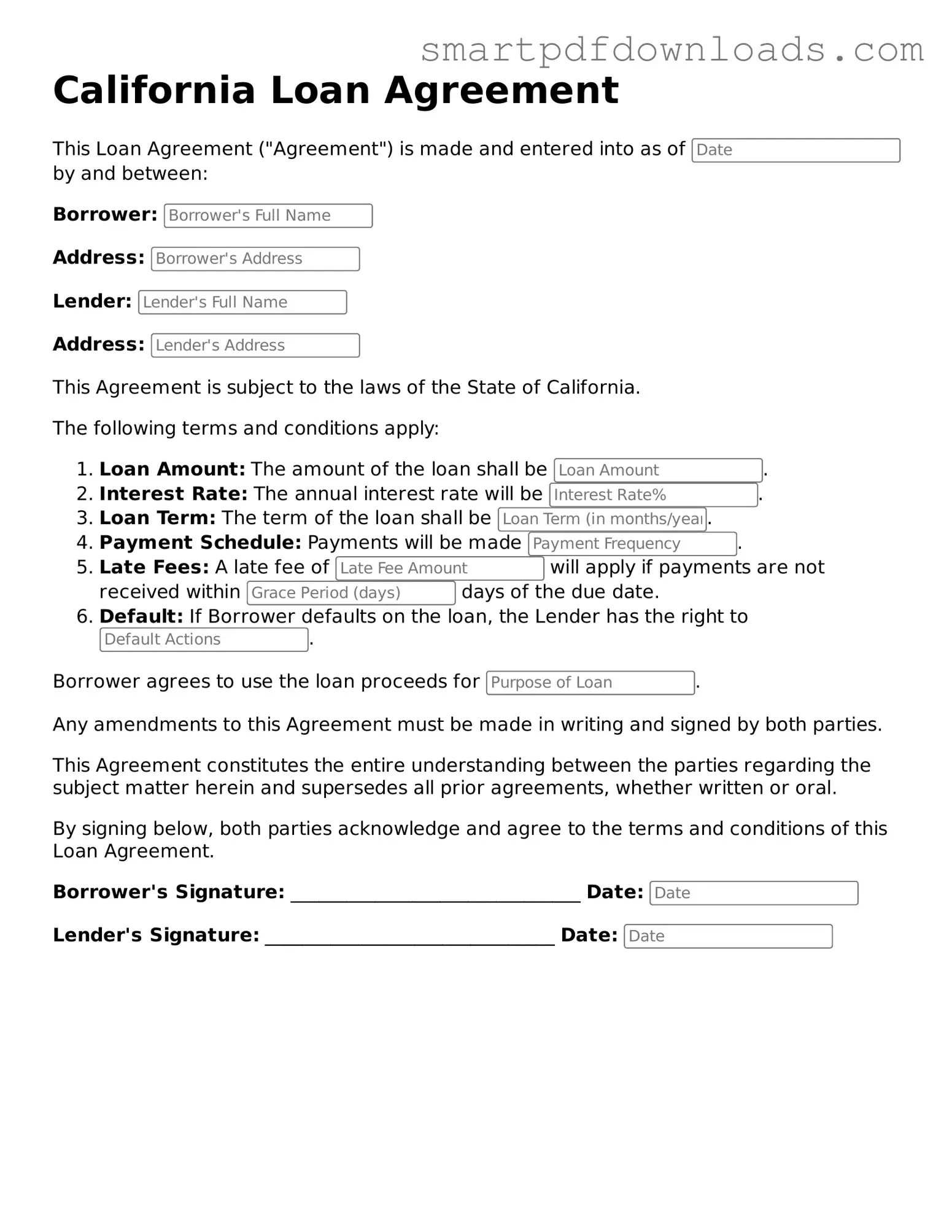Legal Loan Agreement Form for the State of California
A California Loan Agreement form is a legal document that outlines the terms and conditions of a loan between a lender and a borrower. This form serves to protect the interests of both parties by clearly defining repayment schedules, interest rates, and other important details. Understanding this agreement is crucial for anyone involved in borrowing or lending money in California.
Edit Loan Agreement Online
